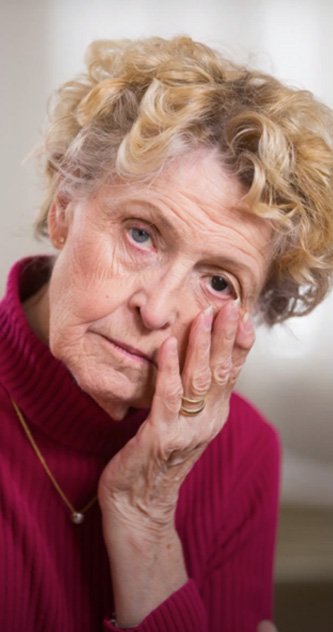 In this time of social and physical distancing, staying emotionally connected with other people is more important than ever. This is especially true for older adults who are at higher risk for isolation and loneliness. Senior isolation was a troubling issue long before the pandemic, but it’s now a more glaring problem than ever. In fact, some experts are now referring to senior loneliness as a “silent pandemic” that is sweeping our nation and the entire world.
In this time of social and physical distancing, staying emotionally connected with other people is more important than ever. This is especially true for older adults who are at higher risk for isolation and loneliness. Senior isolation was a troubling issue long before the pandemic, but it’s now a more glaring problem than ever. In fact, some experts are now referring to senior loneliness as a “silent pandemic” that is sweeping our nation and the entire world.
What do we mean by senior isolation and loneliness? Isolation happens when a person does not have enough people to interact with. Loneliness manifests as a feeling distress over not having enough social relationships or not enough contact with other people.
The global pandemic has limited people of all ages from engaging socially with others in the ways they want to and normally would. Missing out on the enjoyment and fulfillment of being with other people has given the broader population a taste of the isolation and loneliness that many seniors feel on a regular basis. For seniors, the very circumstances of their lives nudge them toward social isolation whether it be mobility limitations, sensory deficits, or chronic conditions with their accompanying symptoms.
The growing awareness about senior isolation may be one of the silver linings in the dark cloud of the global pandemic. Loneliness and isolation are common feelings in the general population right now, but for seniors, the additional health risks are significant. Some studies have shown that senior isolation and loneliness are more harmful to them than smoking 15 cigarettes a day. Alcoholism and diabetes are even smaller risks to seniors’ overall health than isolation and loneliness. With so much at stake for seniors, education and awareness are keys in risk prevention or reduction.
Though 43% of seniors report feeling lonely on a regular basis, those with the highest health risks live alone, have few friends, have strained relationship, and live in unsafe or inaccessible places. Other risk factors include:
- Mobility issues
- Cognitive impairments
- Poor mental health
- Untreated hearing loss
- Language barriers
- Technology challenges
- Major life changes (becoming a caregiver, loss of spouse, moving)
- Poverty
- Being in a marginalized group
If you are wondering if an aging loved one is suffering from social isolation or loneliness, consider the following list of symptoms: aches and pains, headaches, worsening medical conditions, drastic mood changes, anxiety, paranoia, lethargy, sleep issues, loss of appetite or sudden weight gain, substance abuse, poor personal hygiene, hopelessness, and thoughts of suicide. Online assessment available at www.connect2affect.org.
On a hopeful note, research shows that human connection and reduce the risk of early mortality by 50%. A couple of resources to note are the Senior Loneliness Line by Lines of Life. Seniors who need someone to talk to can call 800-282-7035 or 503-200-1633 any time of the day or night. Then, of course, my company, Home Instead Senior Care, provides screened, trained, reliable CAREGivers who help our clients in their own homes in a multitude of ways. Find out more at www.homeinstead.com/352.
Written by Mike Brunt, Franchise Owner
Home Instead Senior Care
